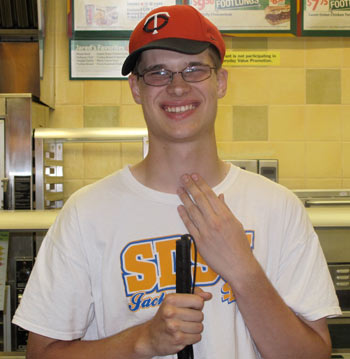
Isolation is a common challenge for people who are DeafBlind. Direct support service providers and creative use of assistive technology and adaptive equipment can help people who are deafblind participate in their communities.
Congratulations!
You have completed Module 4. In this module, you learned:
- Professional service providers can act as the “eyes and ears” of someone who is deafblind.
- Support Service Providers (SSPs) can help a person with combined hearing and vision loss participate more fully in their communities and live more independently.
- Interpreters are trained to communicate information that a person who is deafblind wants to share with others.
- Interveners teach children with combined hearing and vision loss to communicate and understand their environment. They work one-on-one with children in the classroom and the community to help the child participate in activities, learn effectively and become independent.
- Trained orientation and mobility specialists can help a person who is deafblind to use public transportation to travel independently in the community and safely navigate their home and work environments.
- Communications instructors can help family members and caregivers learn to communicate effectively and consistently with someone who has both hearing and vision loss.
- Drivers and special transportation services are available to help people who are deafblind travel safely from place to place.
- About assistive technology and how it can help a person with combined hearing and vision loss to live more independently.
- It’s important to assess and modify a person’s home to make sure the environment is safe.
In the next module, you will learn about some resources that you can turn to for assistance and additional information about combined hearing and vision loss. But first, answer the following questions to see how much you’ve learned! After reading each question, click on the right answer, then click Submit.
1. These direct support providers act as the “eyes and ears” for people who are deafblind.
2. An SSP helps someone who is deafblind to live and work independently. Some activities that an SSP can assist with include (choose all that apply):
3. Most Assistive Technology, or AT, is high tech.
